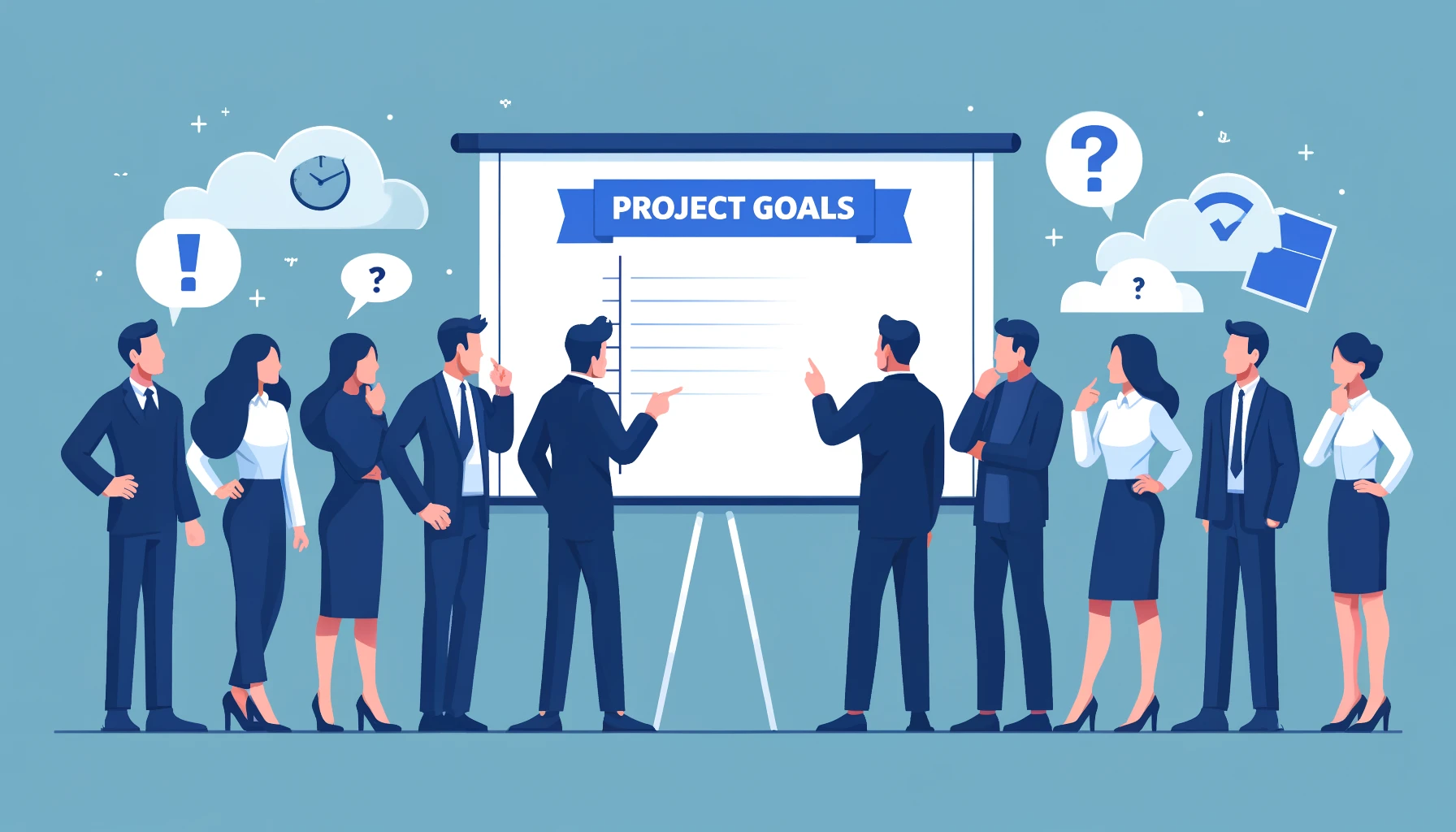
Click the button to start reading
The Importance of Employee Training and Development for Business Growth
Picture a world where employees never improve, learn new skills, or adapt to change. Sounds like a productivity apocalypse, right? Luckily, we have employee training and development to swoop in like a superhero and save the day!
In this article, we’ll explore the significance of employee training and development for business growth, how it transforms organizations, and the best practices for implementing effective training programs.
So, buckle up, because we’re about to dive into the exciting world of learning and development!

The Secret Sauce: Employee Training and Development
Let’s begin by uncovering the magic behind employee training and development, and how it serves as the secret sauce to business growth. In this section, we’ll discuss the link between training and growth, the competitive edge it provides, and its importance in adapting to the changing business landscape.
Link between training and business growth
To stay ahead in the business world, you need more than just a secret handshake or a decoder ring. You need a team of well-trained employees who are equipped with the skills and knowledge necessary to tackle challenges and achieve your organization’s objectives.
Investing in employee training directly impacts your bottom line by improving productivity, enhancing performance, and increasing overall efficiency. It’s like adding rocket fuel to your business engine!
Competitive edge of a well-trained workforce
As the old saying goes, “knowledge is power.” But did you know that in the business world, a knowledgeable workforce is also a powerful competitive advantage?
Companies with well-trained employees are better positioned to outperform their competitors, thanks to their ability to quickly adapt to new situations, develop innovative solutions, and make informed decisions.
Adapting to the changing business landscape
Change is the only constant in today’s fast-paced business environment. Whether it’s new technologies, evolving customer expectations, or emerging market trends, businesses must continuously adapt to stay relevant and thrive.
Employee training and development play a crucial role in ensuring your organization is agile and ready to tackle the ever-changing landscape. By equipping your team with the latest skills and knowledge, they’ll be able to navigate the choppy waters of change with confidence and ease.
In short, employee training and development serve as the secret sauce that fuels business growth. By investing in your workforce, you’re not only strengthening their skills and knowledge but also providing your organization with a competitive edge and the ability to adapt to an ever-changing business landscape.

Unleashing the Power: Benefits of Employee Training
Now that we’ve explored the secret sauce, let’s dig deeper into the treasure trove of benefits that employee training brings to the table. In this section, we’ll examine how training unleashes the power of productivity, satisfaction, and innovation, transforming your organization into a well-oiled machine.
Increased productivity and efficiency
Picture this: your employees are like superheroes, each with their own unique set of powers. But without proper training, they might struggle to control and harness their abilities. Investing in employee training helps them master their skills, ultimately leading to increased productivity and efficiency within your organization.
With a well-trained workforce, tasks are completed more accurately and quickly, streamlining processes and propelling your business forward. In other words, training upgrades employees with powerful skills that make them even more formidable.
Enhanced employee satisfaction and retention
A wise person once said, “Happy employees are productive employees.” Well, maybe they didn’t say it quite like that, but the sentiment holds true.
By investing in employee training and development, you’re not only sharpening employees’ skills but also demonstrating that you value their growth and well-being. This leads to greater job satisfaction and a sense of loyalty towards the organization.
In turn, satisfied employees are more likely to stick around, reducing turnover rates and recruitment costs. Think of it as a happiness boomerang: the more you invest in your employees, the more their satisfaction and loyalty come back to benefit your organization.
Fostering innovation and creativity
Imagine your business as a garden, and your employees as the plants within it. By providing them with the right training and development, you’re essentially nourishing your garden with the perfect blend of nutrients, allowing your plants to flourish and grow. A well-trained workforce is more likely to think outside the box, come up with innovative ideas, and find creative solutions to problems.
When you invest in employee training, you’re not just enhancing their existing skills, but also cultivating a fertile environment for innovation and creativity to thrive. It’s like planting the seeds of ingenuity and watching them bloom into a lush, vibrant garden of possibilities. Partnering with a specialized e-learning app development company can further enrich this environment, offering tailored solutions that align with your unique training objectives.
As you can see, the advantages of employee training go far beyond just improving skills and knowledge. By unlocking the power of productivity, satisfaction, and innovation, you can transform your organization into a powerhouse of growth and success.

The Investment That Pays Off Importance of Employee Training
Now that we’ve explored the powerful benefits of employee training, let’s delve into the realm of practicality and discuss why investing in training programs is not just essential but also a smart financial decision.
In this section, we’ll cover the cost-effectiveness of training programs, their role in mitigating risks and reducing errors, and how they contribute to strengthening company culture.
Cost-effectiveness of training programs
You might be thinking, “Sure, employee training sounds great, but what about the costs involved?” Fear not, for training programs are more cost-effective than you might imagine!
When employees receive proper training, their productivity increases, and the time spent on tasks decreases. This means that the return on investment for training is often greater than the initial cost, making it a wise financial move for any organization.
Plus, well-trained employees are less likely to make costly mistakes or require constant supervision, further saving your company time and money.
In other words, investing in employee training is like putting money in a high-interest savings account – it keeps growing over time!
Mitigating risks and reducing errors
Nobody’s perfect, but employee training can certainly help your team get closer to perfection. By providing your workforce with the right training, you’re equipping them with the knowledge and skills needed to avoid potential pitfalls and minimize errors. This not only saves your company from costly mistakes but also helps protect its reputation and maintain customer trust.
Moreover, training in areas such as safety and compliance can prevent accidents and legal issues, further reducing risks for your business … which is why you can think of employee training as a safety net, catching potential issues before they become full-blown disasters.
Strengthening the company culture
A strong company culture is the backbone of any successful organization. It fosters a sense of belonging, promotes collaboration, and contributes to a positive work environment. Employee training and development play a significant role in shaping and reinforcing your company’s culture.
By investing in training programs that align with your organization’s values and goals, you’re helping employees understand what’s expected of them and how they can contribute to the company’s success.
Additionally, training programs can help break down silos and encourage cross-departmental collaboration, creating a more cohesive and harmonious work atmosphere.
In a nutshell, employee training is like the glue that binds your organization together, creating a strong, unified company culture that drives success.

Learning Never Stops: Continuous Development for Success
As we continue our journey through the world of employee training and development, let’s take a moment to appreciate the value of continuous learning. After all, one-time training sessions might give your team a temporary boost, but long-term success requires an ongoing commitment to development.
In this section, we’ll discuss embracing a culture of learning, adapting to new technologies and methodologies, and preparing employees for future challenges.
Embracing a culture of learning
A culture of learning is like a garden that’s nurtured and tended to regularly, resulting in a continuous blossoming of knowledge and growth. Encouraging a learning mindset within your organization not only keeps employees engaged but also drives their personal and professional development.
By fostering a supportive environment where employees feel comfortable asking questions, seeking feedback, and sharing their expertise, you’re cultivating a culture that thrives on learning and improvement.
Adapting to new technologies and methodologies
In today’s rapidly evolving business landscape, keeping up with new technologies and methodologies is vital for success. Organizations that embrace continuous learning are better equipped to adopt and implement cutting-edge tools and techniques, ensuring they stay ahead of the competition.
By offering ongoing training and development opportunities, you’re empowering your employees to stay up-to-date with the latest industry trends and best practices.
In essence, continuous learning is like an ever-evolving toolbox, constantly stocked with the latest gadgets and gizmos to tackle any challenge that comes your way.
Preparing employees for future challenges
As the saying goes, “the only constant in life is change.” This is especially true in the business world, where organizations must continually adapt to thrive.
By committing to continuous employee development, you’re not just equipping your team with the skills they need for today’s tasks but also preparing them for future challenges and opportunities.
This forward-thinking approach helps your employees stay ahead of the curve and become proactive problem-solvers, ultimately contributing to your organization’s long-term success.
Think of continuous learning as a crystal ball that helps your employees foresee and prepare for the challenges that lie ahead, ensuring your business remains resilient and adaptable. That’s why embracing a culture of continuous learning and development is crucial for any organization seeking long-term success.
By nurturing a learning mindset, adapting to new technologies and methodologies, and preparing employees for future challenges, you’re setting the stage for a thriving, future-proof organization.

Best Practices for Implementing Effective Training Programs
Now that we’ve established the importance of continuous learning and development, let’s dive into the nitty-gritty of creating effective training programs. After all, a well-planned and executed training program is like a well-crafted recipe for success.
In this section, we’ll discuss assessing training needs and setting goals, choosing the right training methods and tools, and evaluating and iterating on training programs.
Assessing training needs and setting goals
Before you start cooking up your training program, it’s essential to identify the key ingredients – your employees’ training needs. Begin by conducting a thorough assessment to pinpoint skill gaps, performance issues, and areas for improvement.
Next, set clear and measurable goals for your training program that align with your organization’s objectives. By doing so, you’re creating a roadmap for success that ensures your training efforts are focused and effective.
Choosing the right training methods and tools
Now that you’ve identified your employees’ training needs and set clear goals, it’s time to select the appropriate training methods and tools. The key here is to consider the unique learning styles and preferences of your employees, as well as the specific objectives of the training program.
From e-learning platforms and instructor-led workshops to on-the-job training and mentoring, there’s a veritable smorgasbord of options to choose from. Don’t be afraid to mix and match different methods and tools to create a well-rounded and engaging training experience.
Remember that variety isn’t just the spice of life – it’s also key to a successful training program!
Evaluating and iterating on training programs
Once your training program is up and running, it’s important to continually monitor its effectiveness and make improvements as needed. By gathering feedback from employees, measuring progress against goals, and analyzing performance data, you’ll gain valuable insights into the strengths and weaknesses of your training program.
Use this information to refine and adjust your approach, ensuring that your training efforts remain relevant, engaging, and impactful. In a sense, evaluating and iterating on your training program is like perfecting a signature dish – it requires ongoing experimentation and fine-tuning to achieve the best results.
Conclusion: Investing in Employees for a Brighter Future
As we reach the end of our enlightening journey through the world of employee training and development, it’s clear that investing in your workforce is a recipe for success.
By nurturing a culture of continuous learning, implementing effective training programs, and embracing the importance of employee development, you’re not only empowering your team but also ensuring the long-term growth and prosperity of your organization.
In a world filled with uncertainty and rapid change, investing in your employees is like planting a robust, resilient tree – with proper care and attention, it will grow, adapt, and thrive, no matter what challenges the future may hold.
So, go ahead and invest in your employees’ growth and development – it’s a decision that will not only benefit them but also pave the way for a brighter, more successful future for your entire organization.
















